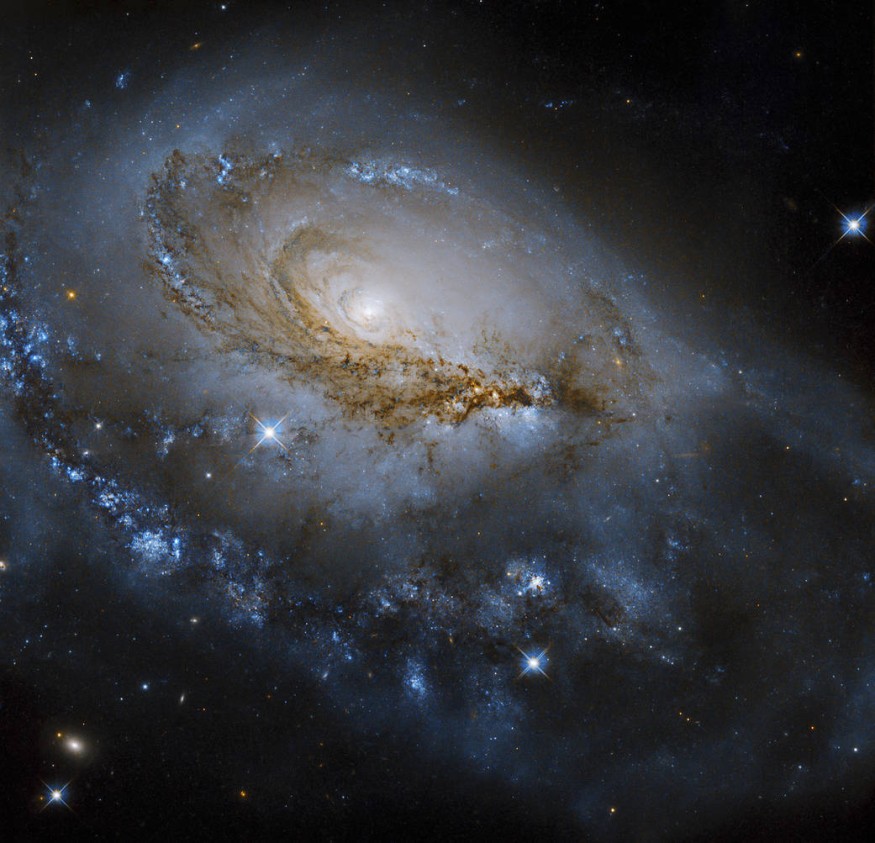NASA Hubble Space Telescope has captured an incredible image that shows the structure of a distant spiral galaxy.
The galaxy, known as NGC 1961, is an active galactic nucleus (AGN) spiral galaxy. It may be found in the constellation Camelopardalis 180 million light-years distant.
Grand design spirals are galaxies with clearly defined spiral arms, such as NGC 3631 and NGC 628. Anemic spirals are galaxies with little contrast between the disc and the arms, and flocculent spiral galaxies are those with patchy or discontinuous arms.
News9Live said the Large Magellanic Cloud, a Milky Way satellite galaxy, inspired the name "Magellanic" for dwarf galaxies having a single spiral arm. A spiral galaxy is referred to as either a barred spiral galaxy or an unbarred spiral galaxy, depending on whether or not it has a central bar, like NGC 1097.
NGC 1961 is categorized as an intermediate spiral galaxy because it lies halfway between barred and unbarred spiral galaxies.
NASA Hubble Space Telescope Finds Galaxy Extending Dusty Spiral Arms
The galaxy NGC 1961 unfolds its beautiful spiral arms in this image from NASA's Hubble Space Telescope that was only made public. Young, dazzling stars are scattered throughout the dusty spiral arms surrounding the galaxy's blazing core in sparkling blue areas.
The galaxy NGC 1961 has an intermediate spiral structure and is an AGN, The Sky Live wrote.
"The galaxy NGC 1961 unfurls its gorgeous spiral arms in this newly released image from NASA's Hubble Space Telescope," according to a statement. "Glittering, blue regions of bright young stars dot the dusty spiral arms winding around the galaxy's glowing center."
According to NASA, intermediate spiral galaxies sit in between "barred" and "unbarred" spiral galaxies because they lack a distinct bar of stars at their cores.

ALSO READ : NASA Hubble Space Telescope, Chandra X-Ray Witness Star Trying To Resurrect After Violent Explosion
AGN galaxies typically have more bright cores than the rest at specific light wavelengths.
The supermassive black hole, which consumes stuff from its surroundings and releases tremendous quantities of radiation from bright jets and winds, powers the galaxy's dynamic nucleus.
Low-Energy Charged Particles
According to recent Hubble studies, officials from NASA claim that NGC 1961 is a typical type of AGN that emits low-energy charged particles.
Because NGC 1961 lacks the normal central star-shaped bar structure that serves as a funnel to pull material from the surrounding accretion disc into the galaxy's core, it is classified as an intermediate spiral galaxy.
NASA released a brand-new photograph of NGC in 1961 on September 14. According to the organization, the Hubble data used to create the image was collected as part of studies on Arp galaxies and supernovae.
Space.com said NASA published a new image of NGC 1961 on September 14. The picture was created using Hubble data that was gathered for earlier projects involving supernovae and Arp galaxies.
Check out more news and information on Space in Science Times.
© 2025 ScienceTimes.com All rights reserved. Do not reproduce without permission. The window to the world of Science Times.











